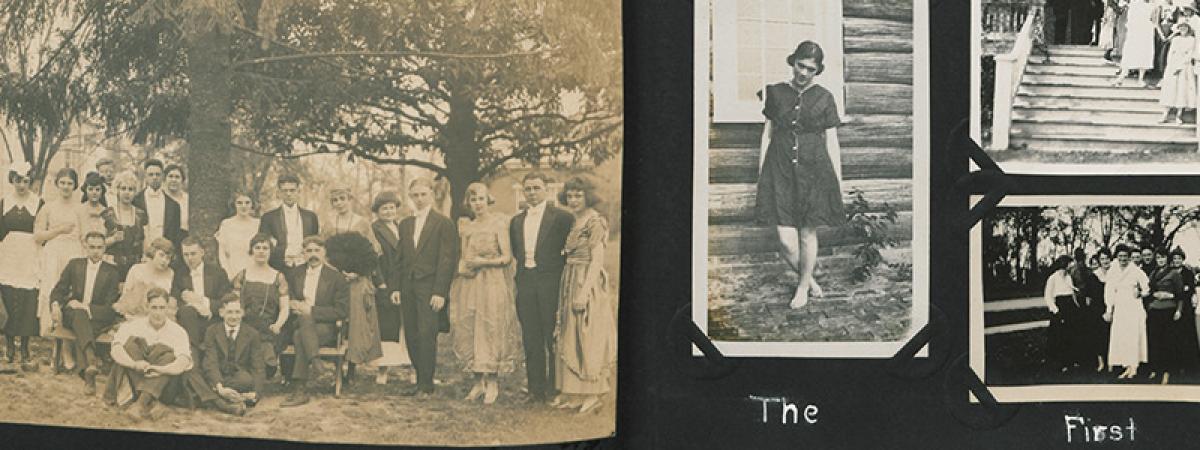
Students and Alumni
Student life at William & Mary
A few highlights from the long history of student life and activities at William & Mary:
- 1750: FHC Society founded
- 1776: Phi Beta Kappa founded; search for material in the SCRC Collections Database
- 18th-21st century: correspondence of students, faculty, staff, and public referencing the College and its students. Search for material in the SCRC Collections Database.
- 19th century: literary societies; search for material in the SCRC Collections Database
- 1890: William and Mary college monthly published (1890-1903). It was continued by The William and Mary literary magazine.
- 1899: Colonial Echo first published
- 1908-1909: College Topics published (v. 1 Oct. 8-May 18, 1909)
- 1911: The Flat Hat first published
- 20th Century: Scrapbooks created by students flourish; administrative records from the Office of the President to various deans as well as personal papers of faculty, staff, students, and alumni are available and document student life. Records from student groups are more widely available. Search for material in the SCRC Collections Database.
- 1918: Women students are admitted to the College of William and Mary.
- First Asian American Students: Art Matsu (1923-1928) and Beatrice Fujiwara (1949-1953)
- First African American Students: Hulon Willis (1951, graduate student), Oscar Blayton (1963, undergraduate student), first residential students were Karen Ely, Lynn Briley, Janet Brown (1967)
- Today: So what should we do now? How are we currently documenting student life and what should we be doing? One answer is that documenting student life now includes all of the things we did before as well as collecting fliers, websites, and- What do you think?
Conducting research about William & Mary alumni and students
Information on Students and Alumni of William & Mary, especially historical data involves continuous research. In many cases the data is incomplete. As findings are discovered the information is added to this knowledge base.
Resources
There are two main resources used to determine if and the dates individuals attended William & Mary during the 18th thru early 20th centuries. They are:
- A Provisional List of Alumni, Grammar School Students, Members of the Faculty, and Members of the Board of Visitors of the College of William and Mary in Virginia, from 1693 to 1888
- The Catalogue of the Alumni and Alumnae For the Years 1866-1932
Additional Resources include:
- Research Guide William & Mary related research. Researchers will find the "People & Groups" tab of particular use.
- Research Guide Williamsburg - Related Collections in the Special Collections Research Center.
- Colonial Echo yearbook (1899- ).
- The Flat Hat student newspaper (1911- ).
- College Catalogs
- "Hark the students' voices swelling" : nineteenth century student life at the College of William and Mary, Taylor, Peter Jeffrey. Thesis (Honors)--College of William and Mary, 2005. Archives Book collection call number: LD6051 .W5m Hist., 2005, T39.
- Contemporary enrollment data is available from the University Databooks, which have been digitized and are available online.
References
- 1790-1800 student numbers from the "Students" folder and attributed to Lyon G. Tyler, University Archives Subject File Collection, Special Collections Research Center, Swem Library, William & Mary.
- 1831-1861 student numbers from The American Almanac and Repository of Useful Knowledge for the Year 1831, Boston: Gray and Bowen, 1830. AY 54 A5 (1831-1861).
